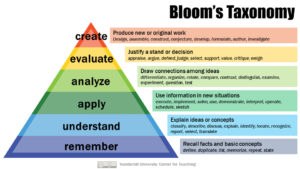Inside a Pocket Museum

To view the photo-rich magazine version, click here.
Originally appears in the Winter 2019 issue.
To see the General Rubric for Pocket Museums, click here.
WHEN ELEMENTARY teacher John Paull welcomes a new group of students into his classroom the first day, he stands silently in front of the room gazing into a small tin container pulled from his pocket. “This process never fails to pique student curiosity,” he says. “I look up and tell my young audience that my tin is a pocket museum. As they crane their necks to see what’s inside, I know I have captured their interest” (2016, p. 29). With this introduction, Paull sparks questions from learners, then tells a story about discovering each artifact in the tiny tin. By the end of that first class meeting, Paull provides all learners with tins of their own, and instructs learners to place unique treasures in them.
Through his use of a self-dubbed pocket museum, Paull communicates what is prized in this learning community: curiosity, discovery, and pieces of collected evidence to tell a story. In describing the items in his pocket museum, Paull invites learners to present their own discoveries.
At a range of grade levels, students relish becoming curators in the classroom. In the curatorial role, learners take charge of organizing artifacts to express their understandings of classroom content at work in the world. As John Paull (2016) notes, the pocket museum is a simple but eye-catching way to collect nature’s treasures and captivate learners’ attention (p. 28).
In our university environmental education course, we tinkered with the pocket museum format. We thought about ways to harness student curiosity and channel it toward enlivening classroom presentations through curation. In this article we present ideas about how learners of all ages can assemble evidence that distinguishes their surrounding habitat, how writing can illuminate their understanding, and how teachers can employ a rubric to structure classroom performance and provide feedback about student effort.
If you are not already a subscriber, please subscribe to read the full article
Malia Rivera has just completed her Master’s of Teaching in Mathematics at James Madison University and this past fall entered her first classroom in Arlington, Virginia. Tim Thomas is an Associate Professor in the College of Education at James Madison University in Harrisonburg, Virginia. He works with pre-service teachers in and outside of classrooms, with a focus on communities that learn about place-based education. Tim and Malia can be reached at malia.rivera@apsva.us and thomastg@jmu.edu, respectively.
Leave a Reply
You must be logged in to post a comment.











Super article!
How can I contact the authors?
John Paull
Hi John – You can reach Malia and me best through our email addresses posted at the end of the article. Thanks for your inspiration — for us and for all your students!
Tim Thomas
We are glad you liked the article, John. You are welcome to use the email addresses of the authors which are at the end of the article.
Thanks, Tim for responding.
Green Teacher